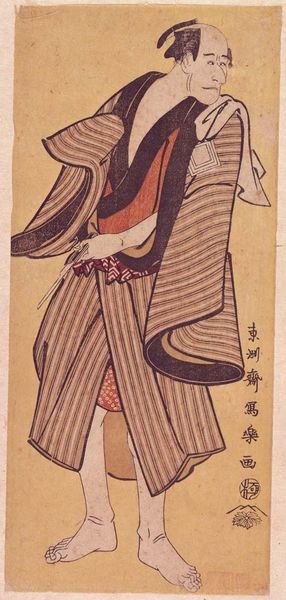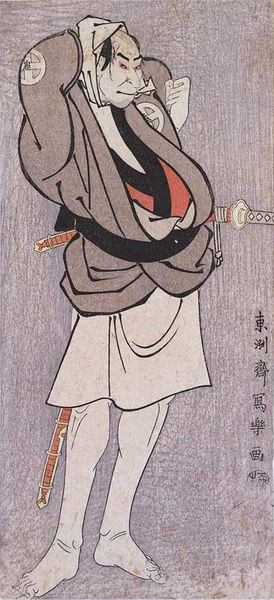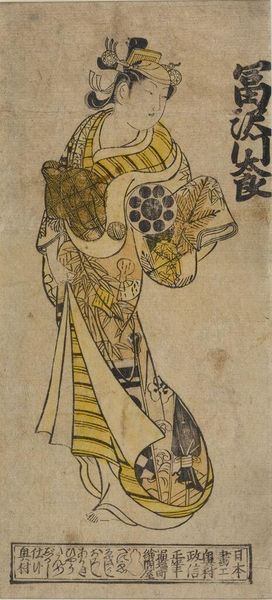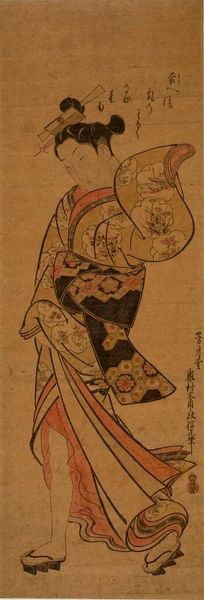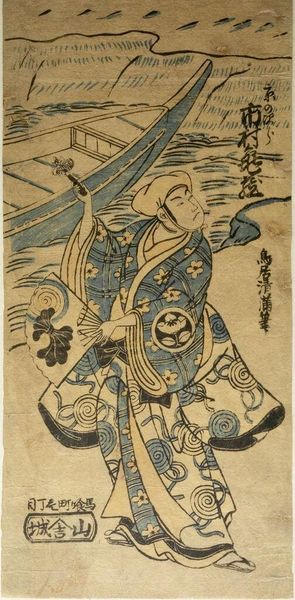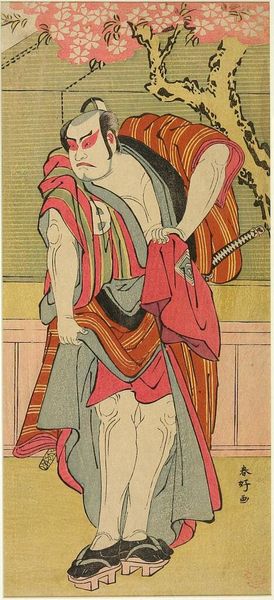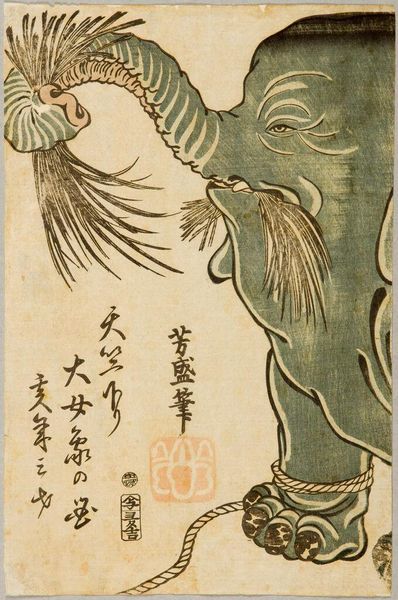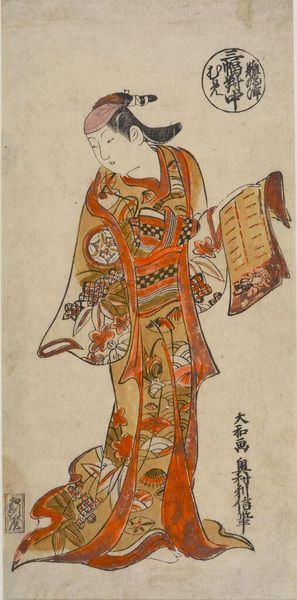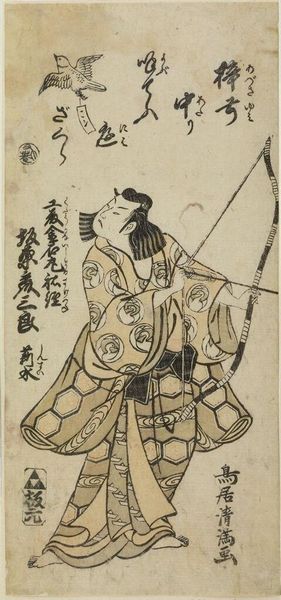
Kabuki Actor Ichikawa Komazō II as Minase Rokurō Munezumi in a Kamishimo 1795
0:00
0:00
print, woodblock-print
#
portrait
# print
#
asian-art
#
ukiyo-e
#
figuration
#
woodblock-print
#
genre-painting
Copyright: Public domain
Editor: This woodblock print from 1795 by Tōshūsai Sharaku, titled "Kabuki Actor Ichikawa Komazō II as Minase Rokurō Munezumi in a Kamishimo," is captivating. I’m struck by how the textures, particularly the actor's robe, almost seem to ripple. How might you interpret this work, considering Sharaku's process and materials? Curator: What interests me most is the societal context implied by this seemingly straightforward print. Think about the material realities of its creation: the labor involved in carving the woodblocks, the sourcing of pigments, the economics of print distribution. How did those factors shape the final product and its reception by the urban masses? Editor: So, less about artistic expression and more about the means of production? Curator: Not entirely, but inseparable from it. Sharaku's prints were relatively short-lived in popularity. Does this relate to their style, or the constraints put upon materials and methods based on audience consumption habits? Consider the role of the publisher, Tsutaya Jūzaburō, who likely dictated artistic choices based on market demand and available resources. Editor: That’s a completely different way to view it! So the artistic intention is almost secondary to economic factors? Curator: Not necessarily secondary, but certainly intertwined. The very nature of ukiyo-e, mass-produced woodblock prints, forces us to consider it as a commodity embedded within specific socio-economic conditions. Also look at what labor is displayed versus repressed, such as his hands. And what are the indications of class visible from his garment? How are these made to appear a certain way, such as the rendering of light, by using certain means, that were or were not costly? Editor: I hadn’t considered the implications of the “print” aspect so deeply before. Thank you! Curator: It offers a valuable lens to understand not just the image itself, but also the world in which it was made and consumed.
Comments
No comments
Be the first to comment and join the conversation on the ultimate creative platform.
